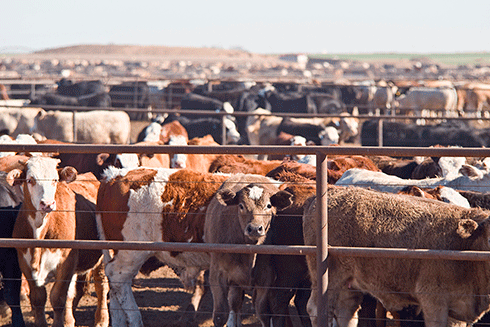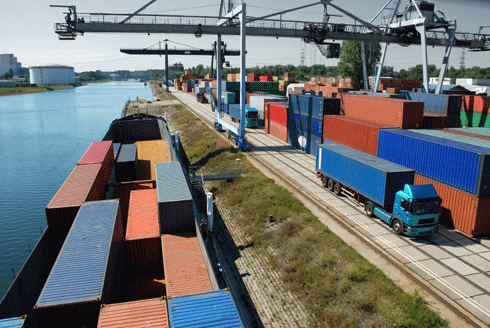
|
Published: 8 September 2014
Peak meat production strains land and water resources
The strain meat production places on global resources could be reduced by eating less meat, feeding livestock with grass instead of grain, using natural fertilisers and ending factory-style livestock operations, according to a recent Worldwatch Institute analysis.

|
|
Close to 70 per cent of the planet's agricultural land is used for animal pasture. Another 10 per cent is used to grow grains to feed livestock for meat and dairy. Credit:
©istock/dhughes9
|
Industrial-scale livestock production has led to the loss of forests to expand grazing lands as well as the use of large quantities of water. Production also uses grains, such as corn or soybeans, for animal feed and relies on heavy doses of antibiotics in animals. Beef is particularly resource-intensive.
Limiting environmental and health impacts requires understanding the kind of meat that people consume worldwide, according to Worldwatch Institute researcher, Michael Renner.
Global meat production rose to a new peak of 308.5 million tons in 2013, according to the UN Food and Agriculture Organization (FAO), a more than fourfold increase over the last five decades. Even more startlingly, meat production has grown 25-fold since 1800.
The growth in meat consumption has not been constrained by rising prices. Worldwide, meat consumption stood at 42.9 kg per capita in 2013. Even though the gap is beginning to close, people in industrial countries continue to eat much larger quantities of meat (75.9 kg) than those in developing nations (33.7 kg).
Close to 70 per cent of the planet's agricultural land is used for animal pasture. Another 10 per cent is used to grow grains to feed livestock. Producing beef is much more resource-intensive than producing pork or chicken, requiring roughly three to five times as much land to generate the same amount of protein. Beef production alone uses about 60 per cent of global farmland, but yields less than 5 per cent of the world's protein.
Agriculture uses about 70 per cent of the world's available freshwater, and one-third of that is used to grow the grain fed to livestock. Beef is by far the most water-intensive of all meats. The more than 15,000 litres of water used per kilogram is more than is required by staple foods such as rice (3400 litres per kg), eggs (3300 litres), milk (1000 litres), or potatoes (255 litres).
Worldwide, more than 40 per cent of wheat, rye, oats, and corn production is fed to animals, along with 250 million tons of soybeans and other oilseeds.
Heavy doses of antibiotics are used to speed livestock growth and reduce the likelihood of disease outbreak in cramped conditions. In the US, 13,600 tons of antibiotics were sold for use in livestock operations in 2011 – almost four times the 3,500 tons used to treat ill people. Even this number, however, pales in comparison with the possibly more than 100,000 tons used in China's meat production.
Alternative practices could reduce these environmental and health impacts: for example, switching feed from grains to grass and other plants; using natural instead of synthetic fertilisers; and ending factory-style livestock operations. But dietary choices also make a big difference.
Country and regional highlights from the report:
-
Asia's 131.5 million tons of meat accounted for close to 43 perc ent of world output in 2013. Europe was second (58.5 million tons), followed by North America (47.2 million tons) and South America (39.9 million tons).
-
China accounted for nearly half of global pig-meat production in 2013.
-
The ten largest meat companies, measured by 2011–13 sales, are headquartered in just six countries: Brazil (JBS, BRF, Marfrig), the US (Tyson Food, Cargill, Hormel Foods), Netherlands (Vion), Japan (Nippon Meat Packers), Denmark (Danish Crown AmbA) and China (Smithfield Foods – acquired by Shuanghui International Holdings in 2013).
Source: Worldwatch Institute



